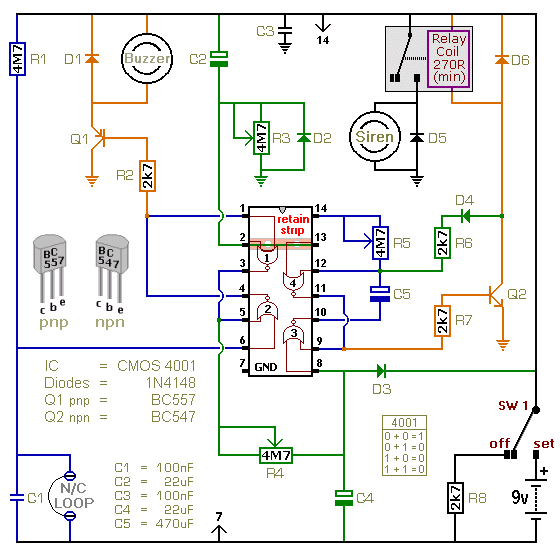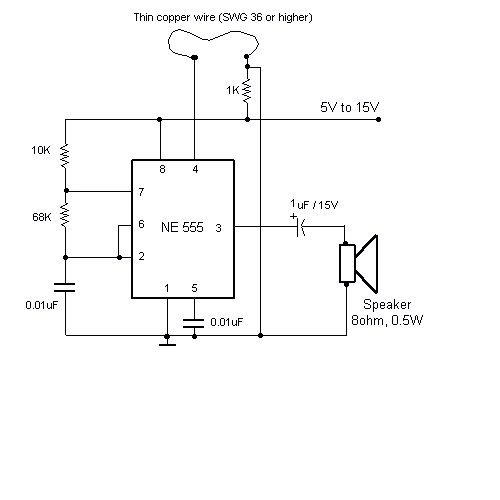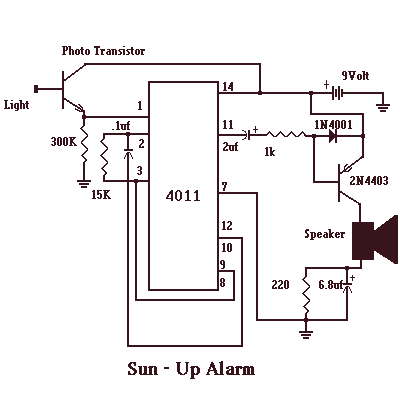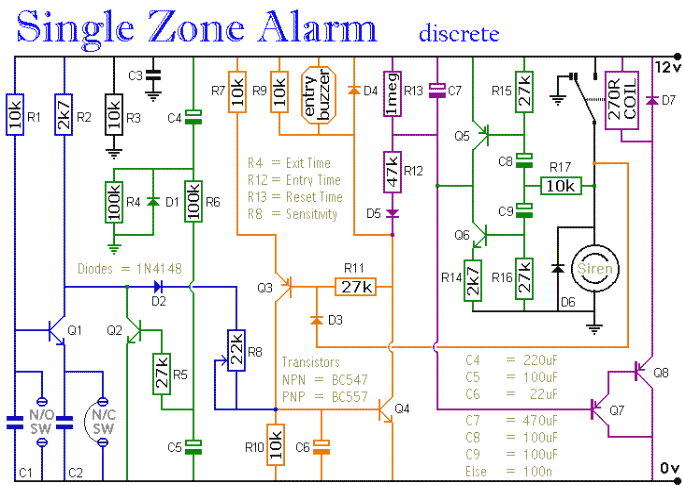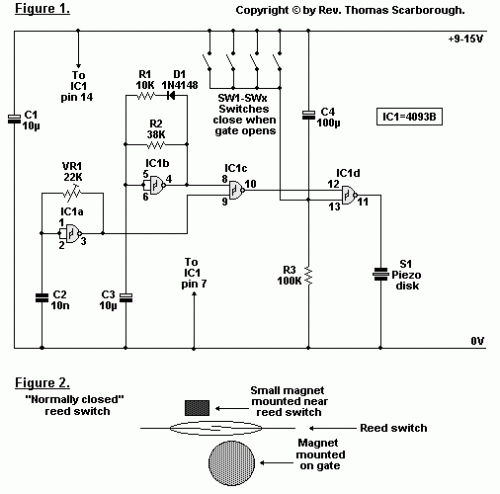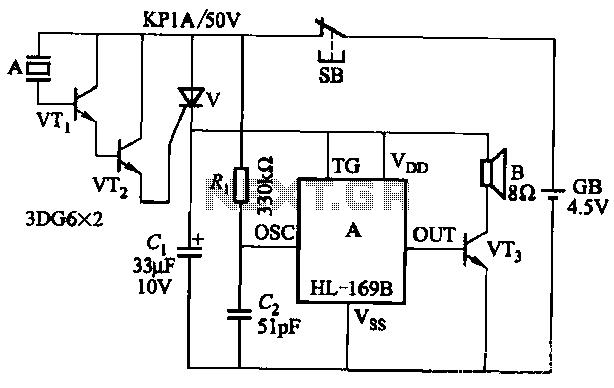
Automotive burglar alarm

The alarm activates after a 13-second delay and remains active for 1 to 1.5 minutes before automatically resetting. It can also be deactivated and reset by opening and reclosing switch SI.
The described circuit functions as a delay-triggered alarm system, incorporating a timing mechanism and a manual reset feature. The core of the design involves a timer IC, such as the 555 timer in monostable mode, which is configured to initiate the alarm after a predetermined delay of 13 seconds.
Upon activation, the timer begins counting down from the set delay. Once the 13 seconds elapse, the output of the timer transitions to a high state, triggering the alarm circuitry. The alarm remains active for a duration that can be adjusted between 1 minute and 1.5 minutes, determined by the values of the timing resistors and capacitors in the circuit. After this period, the timer automatically resets, returning to its initial state and silencing the alarm.
An additional feature of the circuit is the manual reset capability. This is accomplished using switch SI, which, when opened and then closed, interrupts the power to the timer momentarily. This action forces the timer to reset, allowing for immediate deactivation of the alarm. The design ensures that the user can quickly silence the alarm without waiting for the automatic reset period to expire.
The overall schematic would typically include a power supply section, the timer IC, necessary passive components (resistors and capacitors for timing), the alarm output (such as a buzzer or LED indicator), and the manual reset switch SI. Proper consideration must be given to the component ratings and configurations to ensure reliable operation and safety.Alarm triggers on after a 13 second delay and stays on for 1-1 Vfe minutes. Then it resets automatically It can also be turned off and reset by opening and reclosing SI. 🔗 External reference
The described circuit functions as a delay-triggered alarm system, incorporating a timing mechanism and a manual reset feature. The core of the design involves a timer IC, such as the 555 timer in monostable mode, which is configured to initiate the alarm after a predetermined delay of 13 seconds.
Upon activation, the timer begins counting down from the set delay. Once the 13 seconds elapse, the output of the timer transitions to a high state, triggering the alarm circuitry. The alarm remains active for a duration that can be adjusted between 1 minute and 1.5 minutes, determined by the values of the timing resistors and capacitors in the circuit. After this period, the timer automatically resets, returning to its initial state and silencing the alarm.
An additional feature of the circuit is the manual reset capability. This is accomplished using switch SI, which, when opened and then closed, interrupts the power to the timer momentarily. This action forces the timer to reset, allowing for immediate deactivation of the alarm. The design ensures that the user can quickly silence the alarm without waiting for the automatic reset period to expire.
The overall schematic would typically include a power supply section, the timer IC, necessary passive components (resistors and capacitors for timing), the alarm output (such as a buzzer or LED indicator), and the manual reset switch SI. Proper consideration must be given to the component ratings and configurations to ensure reliable operation and safety.Alarm triggers on after a 13 second delay and stays on for 1-1 Vfe minutes. Then it resets automatically It can also be turned off and reset by opening and reclosing SI. 🔗 External reference
Warning: include(partials/cookie-banner.php): Failed to open stream: Permission denied in /var/www/html/nextgr/view-circuit.php on line 713
Warning: include(): Failed opening 'partials/cookie-banner.php' for inclusion (include_path='.:/usr/share/php') in /var/www/html/nextgr/view-circuit.php on line 713
